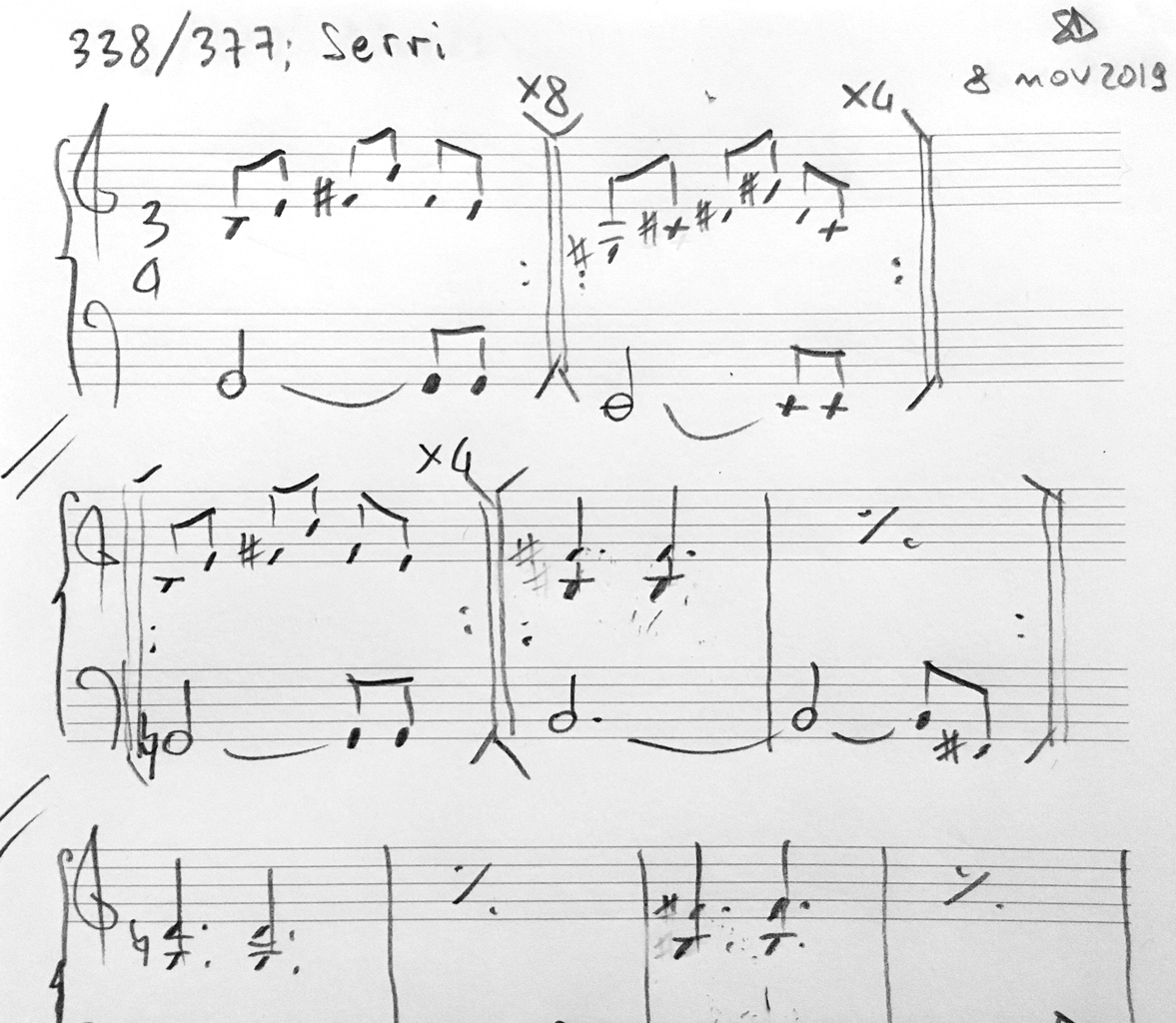
338/377: Serri
INSPIRATION

Here we are. The cold has finally arrived and the day is grey and rainy. They warned me that it would be particularly cold in Serri, as it is high up, adjacent to the Giara of the same name.
When I arrive at the Town Hall, Mayor Samuele and Councilor Federico welcome me. The latter, being an archaeologist, will guide me through one of the most important archaeological sites in the area, if not the whole island. Together with the administrators also the guys of the Civil Service, Federica and Emiliano.
Once my things are arranged at the Belli Come il Sole b&b owned by Paolo and Antonella, we head towards the square of the parish church of San Basilio Magno, built in 1100 but probably on a previous Byzantine structure. The peculiarity is that the facade is built of light stone while the bell tower is made for the lower half of dark basalt alternating with light ashlars, and for the upper half of slightly lighter volcanic rock.

We all get in the car to go and visit the wooded area on the municipal mountain, in the direction of Mandas. We drive through valleys and stop to walk on a dirt road, enjoying the green landscape all around, which takes on a melancholy air on this gloomy day.
Returning to the village, we skirt the area of the fair that takes place between May and September, once only for cattle, now a little bit of everything. Not far from this area is the country church of Santa Lucia, built in the early twentieth century and where the party takes place at the beginning and end of the fair.

From here we enter the large valley that looks in the direction of Nurri, where the village of Biora once stood, founded by the Romans, the first settlement of Serri then abandoned by the population to move upwards. Today only a few ruins of the town church, Sa Cresia, remain here. We go up to a flat and rocky area, with low vegetation, up to the springs of Narbonis.

Back in the village, before having lunch at the bar trattoria Caria, we visit the church of Sant’Antonio Abate, next to which is the old Monte Granatico (wheat bank), and then the remains of the church of San Sebastiano, on a road that overlooks the valley in direction of Escolca, just below us.

This is the road that leads to the Nuragic sanctuary of Santa Vittoria, a unique place, where, as stated in the small volume dedicated to this site that is given to me by the administration, “those who have had the chance to wander among its ruins, breathing in the still air that envelops them and seeing the ever-changing colours, they know that an almost unreal sensation of interruption of time has remained impressed here”.
That’s true. The day is grey and cold. Wandering among the ruins of this site, unearthed by the archaeologist Antonio Taramelli at the beginning of the last century, you can breathe a mysterious air of a past frozen here, hibernating. From here come important finds now kept in the Archaeological Museum of Cagliari.

Federico guides us through the various structures of the site. And from the aerial photo you can appreciate the richness of this place and the variety of its monuments. We begin the visit from the “feast enclosure“, a large circular structure, perhaps the largest in Sardinia, so called because it had to be used for important occasions, not just feasts, dances, as evidenced by the presence of structures similar to modern cumbessias, but also as a meeting place. In honour of this, two city councils have also been held here in recent times!
Not far from here is another structure, the temple in antis, and then what is perhaps the symbol of the place, the sacred well, with a staircase and a cistern of basaltic stone which, together with various ashlars of light limestone, they had to make the structure in its entirety particular for the duotone.

Walking through the site you can visit other structures, the ipetral temple, the “enclosure of the tortures”, the curia, and then the remains of the nuraghe next to which stands the small church of Santa Vittoria, right on the edge of the Giara.
Feeling a bit cold, I admire the view and the underlying Sarcidano, and breathe the silence of this magical place, reflecting on the imminent end of this journey.
SOUND FRAGMENTS

SARDINIAN SHORT STORIES
Raffaele Pilia, an old acquaintance from my time as a student at the Cagliari Conservatory, is following my project and wanted to be present during my day in Serri.
We meet him in the morning in the square of the parish church and he will accompany us for all visits. Upon returning from the sanctuary of Santa Vittoria, Raffaele is keen to let me visit the house of his parents, both natives of Serri, which is located right in the area behind the parish church, the oldest neighbourhood where the first houses were built.
The house was bought by his maternal great-grandfather at the beginning of the last century, and this is where his mother lived. And it is in this small house that musicians often meet, even some friends of mine, and that various works have been recorded, including that of the Julia Ensemble, of which Raffaele is co-founder, a group with a chamber-minimalist approach to improvisation and to the composition.
Raffaele has also written music for soundtracks and collaborated as a musician, producer and sound engineer in over thirty record releases (from alternative rock to jazz to contemporary music) both nationally and internationally, and today it is a real pleasure to share this day with him, in the place of its origins. I hope sooner or later I too will be one of the musicians who will be able to record something in this house in the center of the old Serri.